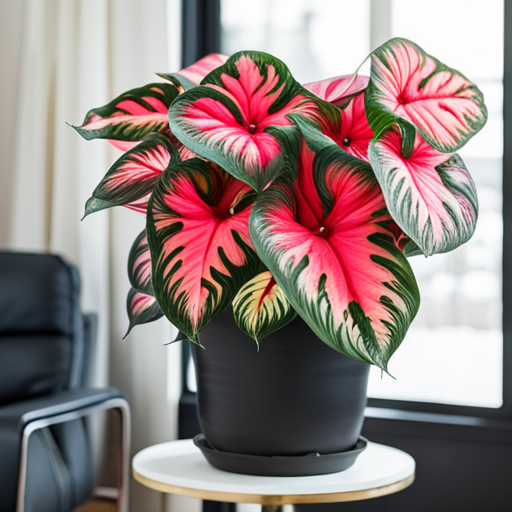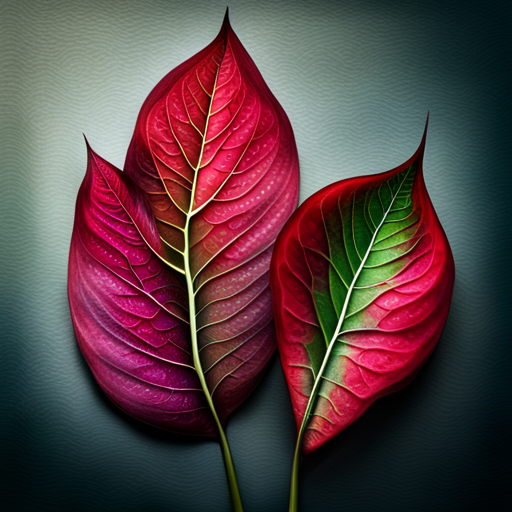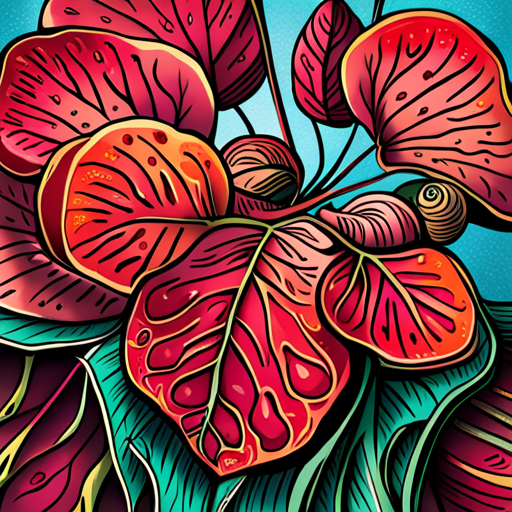Curling leaves in young plants may be a natural occurrence, but if older leaves are curling, it may indicate insufficient watering or high temperatures. Nutrient deficiencies, particularly nitrogen, can also cause leaf curling and yellowing. Pests like aphids and whiteflies, as well as diseases such as bacterial leaf spot, can contribute to leaf curling and yellowing.
To prevent bacterial leaf spot, it is recommended to plant caladiums in well-drained soil and water them at the base. Proper watering practices and ensuring adequate drainage are crucial in preventing leaf curling. Increasing water frequency and misting the leaves can potentially improve the situation. If the caladiums fail to improve after a week or two, seeking professional consultation is advisable.
By understanding the causes and implementing preventive measures, caladium enthusiasts can ensure healthy and vibrant plants.
Contents
- 1 Our Highlighted Points
- 2 Causes of Curling Leaves
- 3 Prevention and Care
- 4 Professional Consultation
- 5 Can Unhealthy Bamboo Plants Cause Caladium Leaves to Curl?
- 6 Frequently Asked Questions
- 6.1 Are caladium leaves supposed to curl naturally?
- 6.2 How can I determine if my caladium leaves are curling due to lack of water or high temperatures?
- 6.3 Can nutrient deficiency be the sole cause of caladium leaf curling?
- 6.4 What are some common pests that can infest caladium plants and cause leaf curling?
- 6.5 Are there any specific diseases that can cause caladium leaves to curl and turn yellow?
Our Highlighted Points
- Caladium leaves can curl due to factors such as too much sun, lack of water, or pest problems.
- Curling can be a natural part of the growth process for young plants, but it may indicate lack of water or high temperatures in older leaves.
- Nutrient deficiency, particularly a lack of nitrogen, can cause caladium leaves to curl and turn yellow.
Causes of Curling Leaves

Curling leaves in caladiums can be caused by factors such as excessive sun exposure, inadequate watering, pest infestations, or nutrient deficiencies.
Common pests like aphids, mites, or scale can infest caladium plants and cause the leaves to curl. These pests feed on the plant sap, which can lead to leaf distortion and curling.
Nutrient deficiency, such as a lack of nitrogen, potassium, or phosphorus, can also contribute to leaf curling in caladiums. Nitrogen deficiency, in particular, is a common cause of curling leaves. This nutrient is essential for healthy leaf development, and its deficiency can result in stunted growth and leaf curling.
Therefore, it is important to address pest infestations and provide adequate nutrition to prevent curling leaves in caladium plants.
Prevention and Care

Proper watering techniques and ensuring adequate drainage are effective measures for preventing and addressing the issue of caladium leaf curling. Caladiums require consistent moisture but not excessive waterlogging, which can lead to root rot and curling leaves. Watering should be done at the base of the plant to avoid wetting the foliage, as this can promote diseases. It is crucial to establish a watering schedule that allows the soil to dry slightly between waterings. Additionally, using well-drained soil is essential to prevent water accumulation around the roots. To assist the audience further, here is a table summarizing the key points of proper watering techniques and soil conditions for caladiums:
| Watering Techniques | Soil Conditions |
|---|---|
| Water at the base | Use well-drained |
| Establish a | soil to prevent |
| watering schedule | water accumulation |
| Allow soil to dry | around the roots |
| slightly between | |
| waterings |
Professional Consultation

Seeking professional consultation may be necessary if the issue with caladium plants persists despite implementing proper care and watering techniques. While many cases of curling leaves can be resolved through adjustments in watering, sunlight exposure, or pest control, there are instances where the problem may be more complex and require expert advice.
When to seek professional help:
- Persistent Symptoms: If the caladium leaves continue to curl and show no signs of improvement after implementing recommended care practices, it is crucial to consult a professional.
- Disease or Pest Infestation: If the curling leaves are accompanied by other symptoms like discoloration, spots, or the presence of pests, it is important to seek expert advice to accurately identify and treat the specific issue.
- Lack of Knowledge or Experience: If you are unsure about the appropriate care techniques or lack experience in dealing with caladium plants, consulting a professional can provide valuable guidance and ensure the health and vitality of your plants.
4. Preventing Further Damage: Seeking professional help can help prevent the issue from worsening and potentially save your caladium plants from irreversible damage. Importance of expert advice cannot be overstated, as it can lead to effective solutions and prevent future problems.
Can Unhealthy Bamboo Plants Cause Caladium Leaves to Curl?
Unhealthy bamboo plants can indeed cause caladium leaves to curl. To prevent this, focus on reviving outdoor bamboo plants: common solutions include proper watering, providing adequate sunlight, and ensuring well-drained soil. Paying attention to these factors will promote healthy bamboo growth, subsequently preventing any adverse effects on caladium leaves.
Frequently Asked Questions
Are caladium leaves supposed to curl naturally?
Natural curling patterns in caladium leaves are influenced by various factors. Young plants may naturally curl as part of their growth process. However, older leaves curling may indicate lack of water, high temperatures, pests, diseases, or nutrient deficiencies.
How can I determine if my caladium leaves are curling due to lack of water or high temperatures?
Determining the causes of leaf curling in caladiums can be done by considering factors such as lack of water or high temperatures. Proper management techniques, such as adequate watering and temperature control, can help prevent and address leaf curling in caladium plants.
Can nutrient deficiency be the sole cause of caladium leaf curling?
Nutrient deficiency can contribute to caladium leaf curling, but it is not the sole cause. Other factors such as improper watering, pest infestation, diseases, and temperature stress can also lead to leaf curling in caladium plants.
What are some common pests that can infest caladium plants and cause leaf curling?
Common pests that can infest caladium plants and cause leaf curling include aphids, mites, and scale insects. Effective pest control methods include using insecticidal soaps, neem oil, or introducing natural predators. Natural remedies such as garlic or chili pepper sprays can also be used.
Are there any specific diseases that can cause caladium leaves to curl and turn yellow?
Caladium leaf curling and yellowing can be caused by diseases such as bacterial leaf spot, powdery mildew, and anthracnose. These diseases can infect the leaves, leading to curling and yellowing. Proper prevention and treatment measures should be taken to address these diseases.

